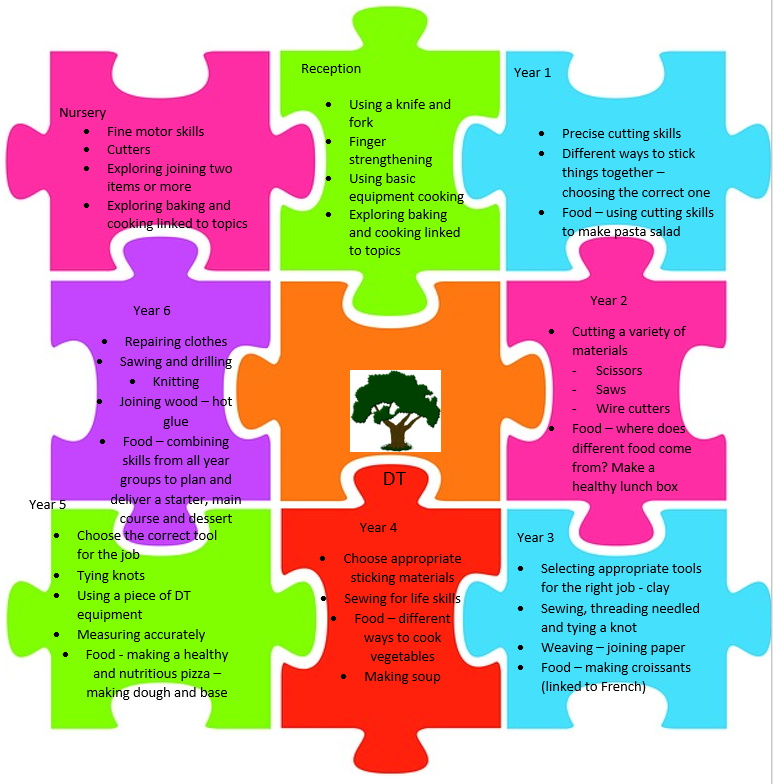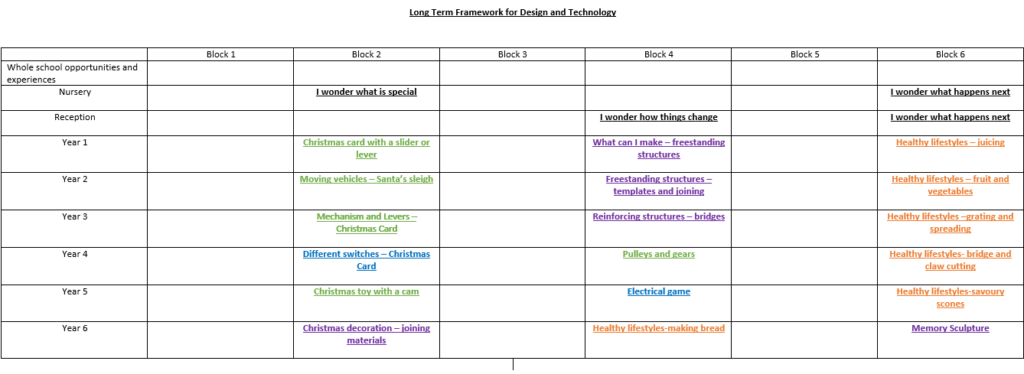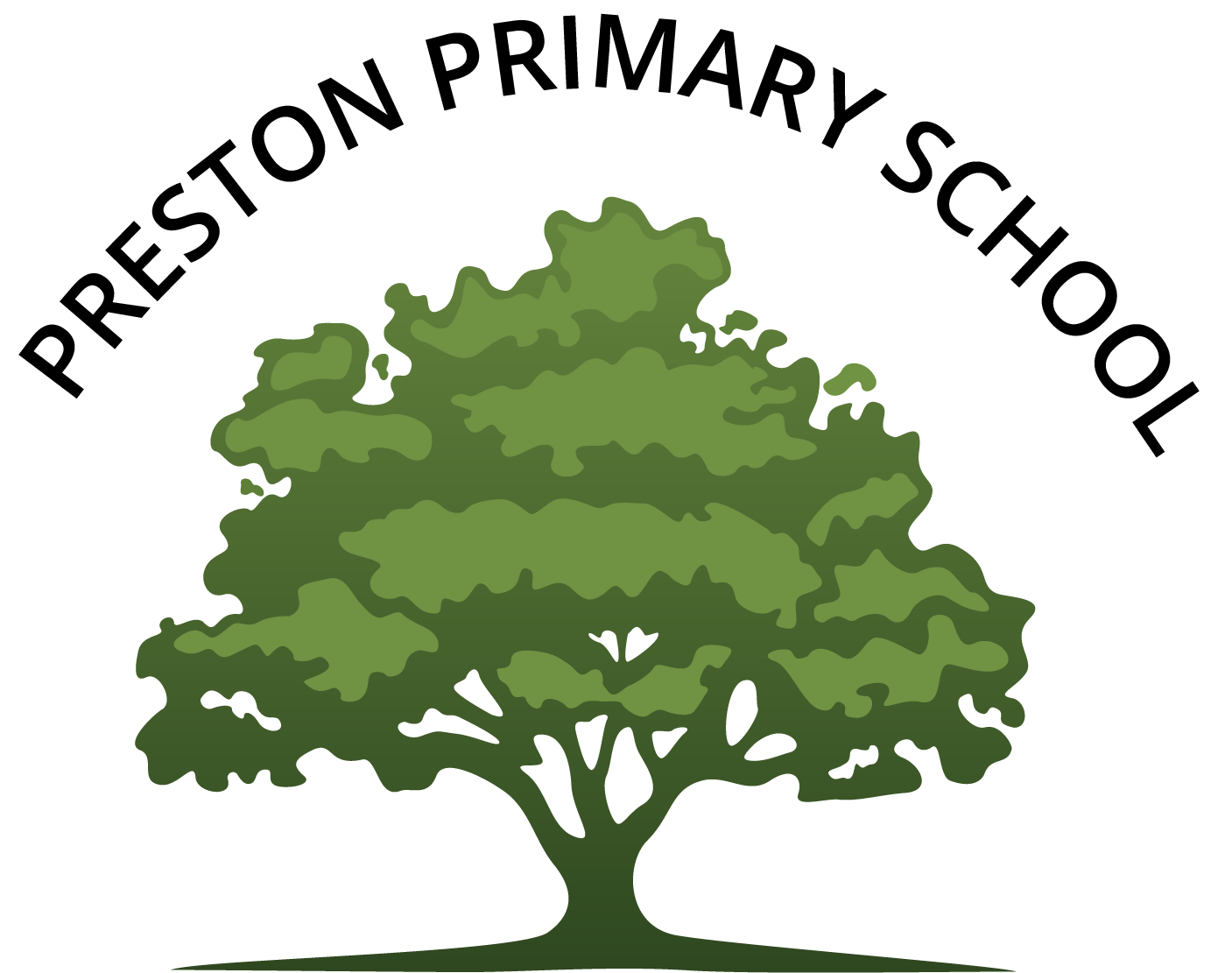DT
Design and Technology encourages children to use their creativity to design and make products. Children will develop their skills and then use these to design purposeful, functional and appealing products using the design process of planning, creating and evaluating. At Preston, we aim to give children key skills in Design and Technology to develop the creative, technical and practical expertise needed to perform everyday tasks confidently and to participate successfully in an increasingly technological world.

Long Term Framework

Long Term Framework with ‘Takeaways’
Progression through the national curriculum
Design
| In Early Years the children will be encouraged to |
| Design and plan a purposeful product. |
| In Key Stage One this then is built upon through studying |
| Design purposeful, functional, appealing products for themselves and other users based on design criteria. Generate, develop, model and communicate their ideas through talking, drawing, templates, mock-ups and, where appropriate, information and communication technology. Build structures, exploring how they can be made stronger, stiffer and more stable. |
| In Key Stage Two this is then built upon through the study of |
| Use research and develop design criteria to inform the design of innovative, functional, appealing products that are fit for purpose, aimed at particular individuals or groups. Generate, develop, model and communicate their ideas through discussion, annotated sketches, cross-sectional and exploded diagrams, prototypes, pattern pieces and computer-aided design. Apply their understanding of how to strengthen, stiffen and reinforce more complex structures. Understand and use mechanical systems in their products. |
Making Processes
| In Early Years the children will be encouraged to |
| Beginning to be interested in and describe the texture of things. Uses various construction materials. Manipulates materials to achieve a planned effect. Constructs with a purpose in mind, using a variety of resources. Uses simple tools and techniques competently and appropriately. Selects appropriate resources and adapts work where necessary. Selects tools and techniques needed to shape, assemble and join materials they are using. They safely use and explore a variety of materials, tools and techniques, experimenting with colour, design, texture, form and function. |
| In Key Stage One this then is built upon through studying |
| Select from and use a range of tools and equipment to perform practical tasks select from and use a wide range of materials and components, including construction materials, textiles and ingredients, according to their characteristics. Explore and use mechanisms [for example, levers, sliders, wheels and axles] in their products. |
| In Key Stage Two this is then built upon through the study of |
| Select from and use a wider range of tools and equipment to perform practical tasks. Select from and use a wider range of materials and components, including construction materials, textiles and ingredients, according to their functional properties and aesthetic qualities. |
Evaluate
| In Early Years the children will be encouraged to |
| Say whether something works well or how it could be better. |
| In Key Stage One this then is built upon through studying |
| Explore and evaluate a range of existing products. Evaluate their ideas and products against design criteria. |
| In Key Stage Two this is then built upon through the study of |
| Investigate and analyse a range of existing products. Evaluate their ideas and products against their own design criteria and consider the views of others to improve their work. Understand how key events and individuals in design and technology have helped shape the world. |
| Design and Technology | |
| Nursery | Beginning to be interested in and describe the texture of things.Uses various construction materials. Manipulates materials to achieve a planned effect. Constructs with a purpose in mind, using a variety of resources. |
| Reception | Uses simple tools and techniques competently and appropriately. Selects appropriate resources and adapts work where necessary. Selects tools and techniques needed to shape, assemble and join materials they are using. They safely use and explore a variety of materials, tools and techniques, experimenting with colour, design, texture, form and function. |
| Year One | Design Design purposeful and functional products for themselves and other users based on basic design criteria generate, develop, model and communicate their ideas through talking, drawing, templates, and, where appropriate, information and communication technology. Make Select from and use a range of tools and equipment to perform practical tasks select from and use a wide range of materials and components, including construction materials, textiles and ingredients, according to their characteristics. Evaluate Explore and evaluate a range of existing products evaluate their ideas and products against design criteria. Technical knowledge Build structures, exploring how they can be made stronger, stiffer and more stable. |
| Year Two | Design Design purposeful, functional, appealing products for themselves and other users based on design criteria generate, develop, model and communicate their ideas through talking, drawing, templates, mock-ups and, where appropriate, information and communication technology. Make Select from and use a range of tools and equipment to perform practical tasks select from and use a wide range of materials and components, including construction materials, textiles and ingredients, according to their characteristics. Evaluate Explore and evaluate a range of existing products evaluate their ideas and products against design criteria. Technical knowledge Explore and use mechanisms in their products. |
| Year Three | Design Use research and develop design criteria to inform the design of innovative, functional, appealing products that are fit for purpose, aimed at particular individuals or groups generate, develop, model and communicate their ideas through discussion, annotated sketches, cross-sectional and exploded diagrams, prototypes, pattern pieces and computer-aided design. Make Select from and use a wider range of tools and equipment to perform practical tasks [for example, cutting, shaping, joining and finishing], accurately select from and use a wider range of materials and components, including construction materials, textiles and ingredients, according to their functional properties and aesthetic qualities. Evaluate Investigate and analyse a range of existing products evaluate their ideas and products against their own design criteria and consider the views of others to improve their work understand how key events and individuals in design and technology have helped shape the world Technical knowledge Apply their understanding of how to strengthen, stiffen and reinforce more complex structures Railway bridges? |
| Year Four | Design Use research and develop design criteria to inform the design of innovative, functional, appealing products that are fit for purpose, aimed at particular individuals or groups generate, develop, model and communicate their ideas through discussion, annotated sketches, cross-sectional and exploded diagrams, prototypes, pattern pieces and computer-aided design. Make Select from and use a wider range of tools and equipment to perform practical tasks [for example, cutting, shaping, joining and finishing], accurately select from and use a wider range of materials and components, including construction materials, textiles and ingredients, according to their functional properties and aesthetic qualities Evaluate Investigate and analyse a range of existing products evaluate their ideas and products against their own design criteria and consider the views of others to improve their work understand how key events and individuals in design and technology have helped shape the world. Technical knowledge Understand and use mechanical systems in their products pulleys levers buildings and materials – York |
| Year Five | Design Use research and develop design criteria to inform the design of innovative, functional, appealing products that are fit for purpose, aimed at particular individuals or groups generate, develop, model and communicate their ideas through discussion, annotated sketches, cross-sectional and exploded diagrams, prototypes, pattern pieces and computer-aided design Make Select from and use a wider range of tools and equipment to perform practical tasks [for example, cutting, shaping, joining and finishing], accurately select from and use a wider range of materials and components, including construction materials, textiles and ingredients, according to their functional properties and aesthetic qualities Evaluate Investigate and analyse a range of existing products evaluate their ideas and products against their own design criteria and consider the views of others to improve their work understand how key events and individuals in design and technology have helped shape the world. Technical knowledge Understand and use electrical systems in their products [for example, series circuits incorporating switches, bulbs, buzzers and motors] apply their understanding of computing to program, monitor and control their products. Lighthouses, switches, water wheels? |
| Year Six | Design Use research and develop design criteria to inform the design of innovative, functional, appealing products that are fit for purpose, aimed at particular individuals or groups generate, develop, model and communicate their ideas through discussion, annotated sketches, cross-sectional and exploded diagrams, prototypes, pattern pieces and computer-aided design Make Select from and use a wider range of tools and equipment to perform practical tasks [for example, cutting, shaping, joining and finishing], accurately select from and use a wider range of materials and components, including construction materials, textiles and ingredients, according to their functional properties and aesthetic qualities Evaluate Investigate and analyse a range of existing products evaluate their ideas and products against their own design criteria and consider the views of others to improve their work understand how key events and individuals in design and technology have helped shape the world. |



